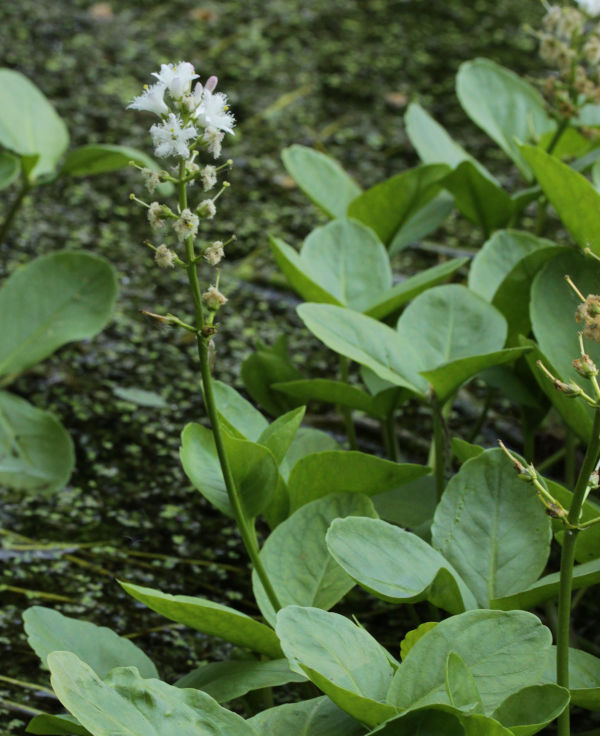How to grow Menyanthes
A marginal, aquatic plant which is ideal for ponds or bog gardens. Native and common to the UK, with the exception of Eastern England. Plants are often found in shallow ponds, fens, bogs and marshes. Menyanthes trifoliata produces star-like, feathery white blooms, often with hints of pink, from April to June each year – stems reach up to 30cm tall. Flowers precede the main foliage growth – offering sustenance to pollinators in spring and early summer. Foliage forms floating mats on the surface of water up to 1.5m across. These provide valuable egg laying sites for adult dragonfly as well as perching and roosting sites. In addition, dragonfly and damselfly nymphs use the stems to climb out of the water ready for their metamorphosis into adults.
Its common name comes from the leaves, which are shaped a little like those of broad beans. One local name for this species, 'Bog Hop' refers to the use of Bogbean, instead of Hops, to flavour beer in Northern England and parts of Europe.
Plant in sun or shade although plants will flower best in full sun. Not suitable for very small ponds as ideally plants need space to spread. Suitable for a pond marginal shelf up to 60cm deep or very wet soil. Plants are herbaceous, with leaves retained from April to October, and Menyanthes trifoliata is fully hardy (H7) so will withstand almost anything the British weather throws its way. Ideally provide any aspect other than north-facing in clay, loam, sand or aquatic soil which benefits from full sun or partial shade.
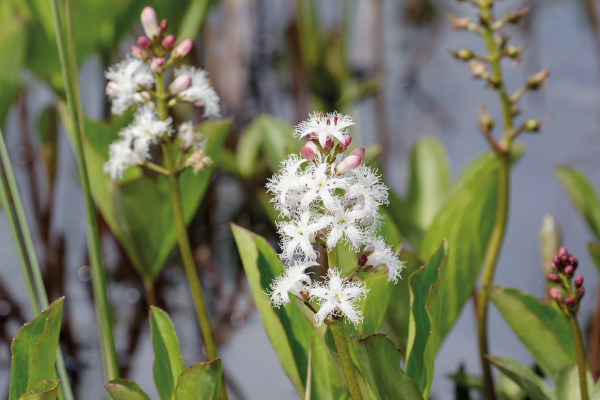
Zantedeschia is a genus of flowering plants from the family Araceae and is native to southern Africa. With a rich history dating back to the Ancient Romans, these deciduous or semi-evergreen perennials have been used as a symbol of celebration. Zantedeschia was Named after Professor Giovanni Zantedeschia, an Italian botanist.
There are two main forms of Zantedeschia: hardy and tender. Hardy forms of the plant can be grown outdoors, enjoy moist soil and full sun or partially shaded conditions - these are known as Arum lilies. Tender forms of Zantedeschia prefer being grown in containers or pots and should be brought inside over the winter - these are known as Calla lilies.
With tuberous flora in all colours from whites, yellows and oranges to deep reds and purples, Zantedeschias are not to be overlooked in any garden, as long as they have sufficient sunlight to grow in.
Ready to learn more about growing Zantedeschia? Read on for all there is to know...

Key Information
Soil pH
Position
Hardiness

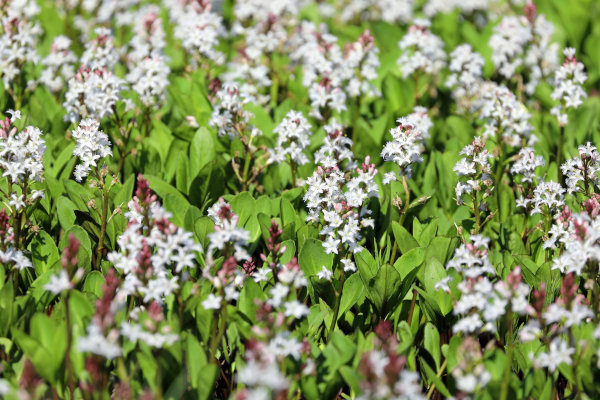
Where & when to plant Menyanthes
Position - Full sun or partial shade of any aspect other than north facing.
Soil - Sand, loam, clay or aquatic wet soil.
Flowering Period - April to June
Hardiness - H7 (colder than -20°C)
Best planted at start of the growing season in spring, although the hardiness of these plants means they can, realistically, be planted at any time provided the ground or pond is not frozen. Early spring to late summer is also the best time to create a bog garden as the roots have time to get established. In the autumn, when food starts to become scarcer, they have more chance of being eaten. However, if you put a Menyanthes trifoliata in autumn, this will create habitat and shelter for animals over the winter. Just ensure that soil is permanently wet if planting in the ground and that you use an appropriate basket and soil if planting in on the top tier of the pond. A supply of sunshine for all or at least part of the day is needed for plants to flower.
Ideal for ponds, wildlife gardens and bog gardens.
How to plant Menyanthes
If planting in the ground, ensure the soil is permanently wet. For pond planting place in a shallow square 2 litre aquatic basket or larger, no deeper than a maximum of 60cm down.
For pond planting (suitable for large ponds)
- Drape the roots into a generous aquatic basket then backfill with aquatic compost and lightly firm down
- Top the basket with gravel to prevent soil being dissolved then water well
- Lower gently into the pond and allow the bamboo like stems to float/settle on the surface with the growing tip pointing up. Where necessary utilise smooth bricks to adjust the plant’s level so that it sits on the surface of the pond and lower as stems lengthen.
- Grow in generous aquatic baskets and locate in large pond so plants have space to spread.
- Position in water up to a maximum of 60cm deep or grow in muddy pool margins
- A site with full sun will encourage more flowers, so partial shade will mean less blooms.
For bog garden planting
- Dig the soil area removing any large stones and weeds and breaking up any lumps
- Add some organic matter such as manure or garden compost to enrich to soil
- Drape the roots over the soil then backfill and lightly firm down
- Rake level and firm with your heels. Rake level again
- Water plants in well to ensure an even distribution of moisture levels and monitor to ensure soil remains permanently wet, even in times of drought
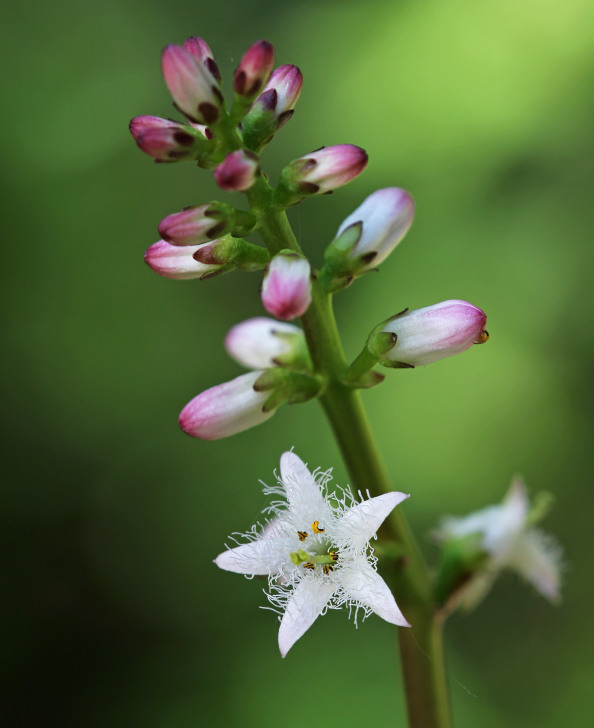
What to plant with Menyanthes
If planting in a pond, then arum lily, Myosotis scorpioides Semperflorens (water forget-me-not) and Gunnera magellanica (Devil’s strawberry) will enhance the surface of your pond, alongside the less invasive Typha minima for the beautiful impact of bulrushes. In bog gardens Asarum caudatum will do well at the drier edges whilst astilbe, primula and erythronium all like a spot at the edge of a pond, alongside ferns and, perhaps, Astilboides tabularis.
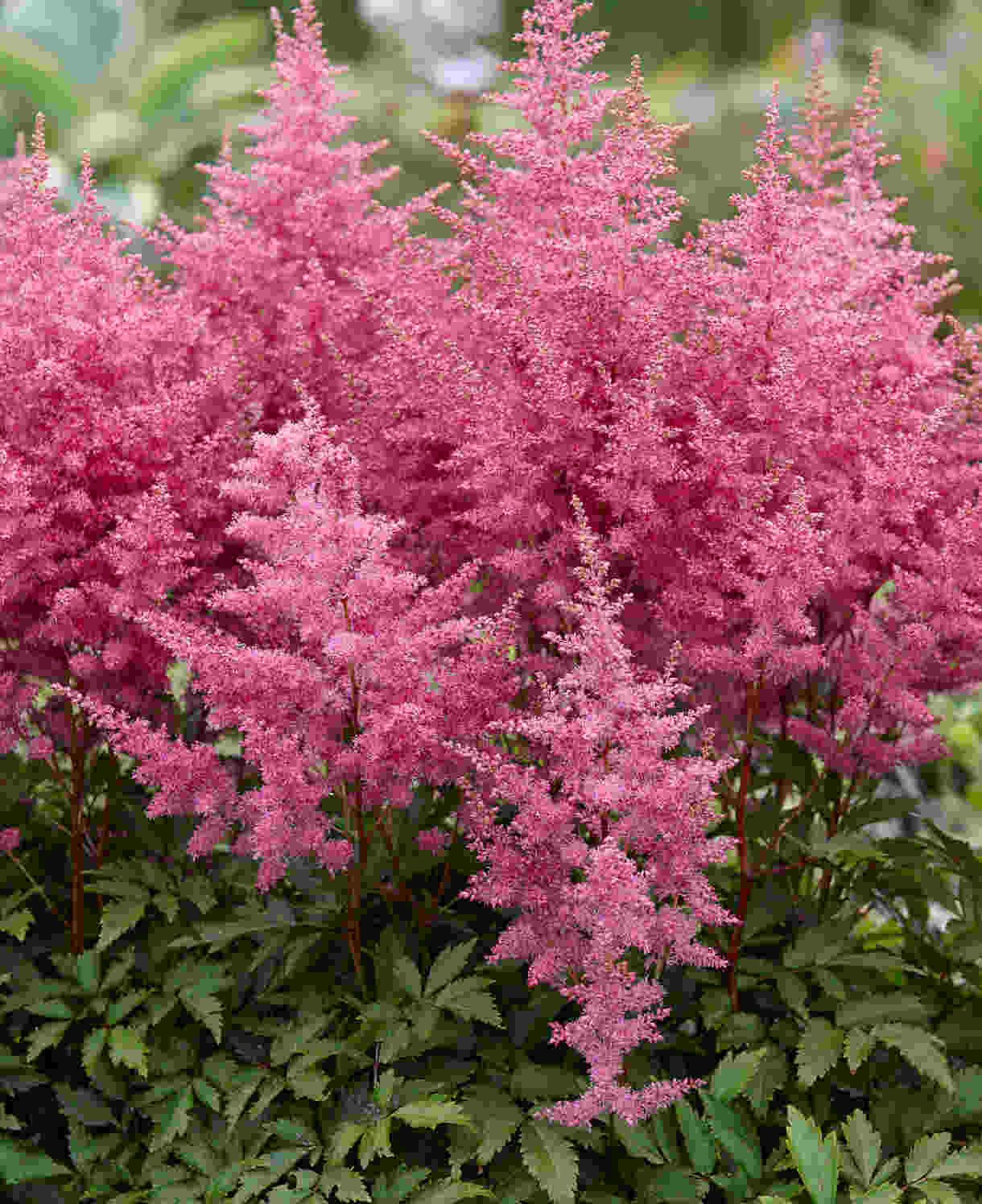


How to care for Menyanthes
Menyanthes trifoliata are aquatic rhizomatous perennials, and the foliage will die back over autumn, re-emerging again the following spring. Simply tidy away if necessary and, dependent on where you are, mulch plants to offer a degree of frost protection.
Watering
In ponds no watering is necessary just ensure that water levels remain consistent in order to keep plants wet.
In bog gardens ensure soil remains wet, watering when weather is particularly hot or dry.
Pruning
Cut back after flowering as necessary and remove faded foliage from both the surface and the base of your pond.
Cold Protection
Not necessary as plants are fully hardy.
Pests and Diseases
Generally pest and disease free.
How to propagate Menyanthes
The quickest and easiest way to propagate Menyanthes trifoliata is by division of established plants in early spring.
- Dig the plant, or a section of the plant, out of the ground or lift basket out of your pond.
- Shake off any excess soil/remove from basket.
- Separate the plant into sections by gently prising the clump apart – use two garden forks to prise apart if this is tricky with your hands.
- Discard old, damaged, or surplus pieces, keeping only the healthy, vigorous material.
- Replant decent-sized pieces where desired either in aquatic baskets or back into the wet soil.
- Water well and, if in an aquatic basket, top with gravel then lower into the pond as per planting instructions above.
* Many plants carry Plant Breeders Rights and cannot be propagated for commercial purposes.
Common Menyanthes questions
Where does bogbean grow?
Bogbean, or Menyanthes trifoliata, requires either the marginal/top tier or a pond or a boggy soil with some sunshine for the majority or all of the day in order to thrive and bloom.
Is bogbean perennial?
Yes, it is a rhizamatous perennial which spreads underground. Flowers are produced in spring after which the foliage becomes more vigorous over summer then fades during autumn. Plants will reinvigorate the following spring.
Is bogbean edible?
It is a medicinal plant, the underground rhizomes are used in traditional and folk medicine to treat lack of appetite, scurvy, fevers, and skin disorders. Extreme caution should be used however as it can irritate the stomach and intestines and cause diarrhoea, pain, nausea, and vomiting in large quantities.
